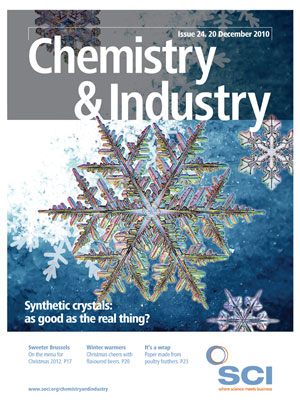The announcement that NASA has discovered bacteria that can substitute arsenic for phosphorus in its DNA and other biomolecules has set the exobiology world buzzing. If true, it would mean that life elsewhere in the universe need not be limited to the principal chemical building blocks seen here on Earth – carbon, nitrogen, hydrogen, oxygen, sulphur and phosphate.
But the discovery quickly risked being overcome by controversy as scientists lined up to criticise the authors of the paper for jumping to publication too quickly and helping to fuel a media ‘feeding frenzy’. And NASA has been accused of ‘hyping’ the story and adding fuel to the media firestorm that engulfed the story. At a US press conference in Washington DC, author Felisa Wolfe-Simon, a NASA research fellow, said: ‘We discovered an organism that can substitute one element for another in its major biomolecules and if there’s an organism on Earth doing something different we’ve cracked open the door to what’s possible for life elsewhere in the universe.’ However, many scientists are now openly critical of the paper and the review process.
The saga began when Wolfe-Simon and colleagues collected bacteria from the extremely inhospitable Mono Lake in California. The lake has a very high salt content, is highly alkaline and is rich in arsenic, making it inimical to most life. But some strains of bacteria thrive.
Bacteria harvested from the lake were grown up in the lab on a diet that slowly restricted phosphate levels while upping the concentration of arsenate. One, named GFAJ-1, a strain of Halomonadaceae, continued to grow in the absence of phosphate and at high levels of arsenate (Science, doi: 10.1126/ science.1197258).
Phosphate (PO43-) is chemically similar to arsenate (AsO43-) which is what has led to speculation that life could make use of either. However, Alexander Bradley, a geobiochemist at Harvard University, US, points out that arsenate is much less stable than phosphate and any biomolecule incorporating it ought to hydrolyse in minutes. The authors speculate that GFAJ-1 can stabilise these arsenic-based molecules using small, water-free pockets.
Rosie Redfield, a microbiologist at the University of British Columbia, Canada, who kick-started the wave of questions on this paper by posting a critique on her website, says that if a PhD student had come to her with these results she would have sent them back to the bench. ‘NASA’s shameful analysis of the alleged bacteria in the Mars meteorite made me very suspicious of their microbiology, an attitude that’s only strengthened by my reading of this paper. Basically, it doesn’t present any convincing evidence that arsenic has been incorporated into DNA.’ She points out that phosphate was still present at low-levels in the growth medium and this, coupled with bacteria scavenging phosphate from dead neighbours, could have been enough to sustain them. She adds that rigorous controls were not carried out and the presence of arsenic in biomolecules is simply inferred, rather than proven.
‘Could there be an arsenic-based backbone in the DNA?,’ asks Jim Hu, a biochemist at Texas A&M University, US. ‘Maybe. But it would be extraordinary.’ He adds that relatively simple experiments, such as chemically slicing up the DNA and running the products through a mass spectrometer to see if the nucleotides have arsenic in them, were not run. A statement released by Wolfe-Simon says they are aware of the criticism and are putting together a response.





